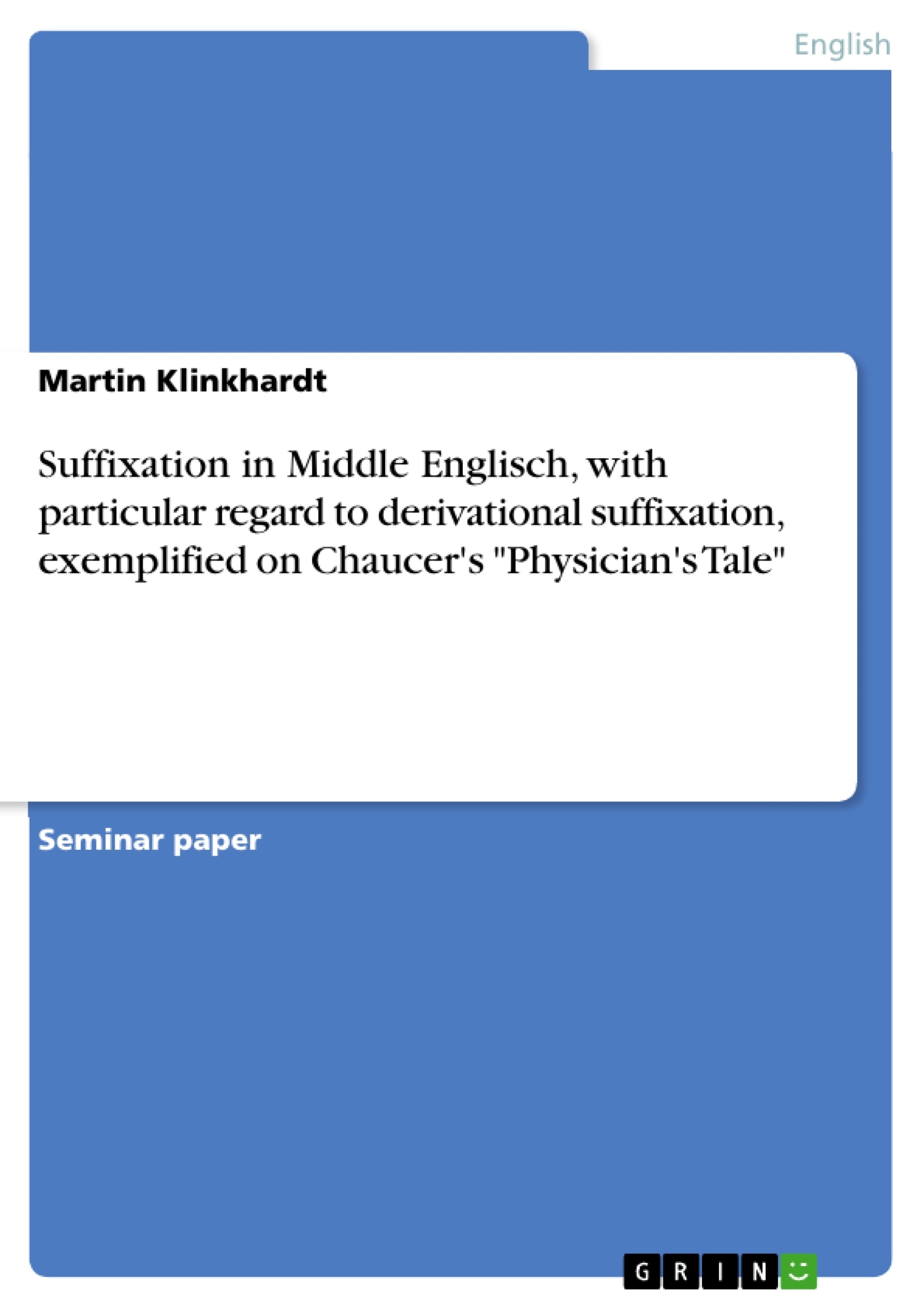The English language has been very productive at all times in the area of word formation. English has, in fact, the reputation of a very creative language because of the many ways in which new words and expressions can be coined. When we look at a language to examine the processes of word formation, it seems reasonable to begin by scanning a discrete text which stems from a particular period of the language for all phenomena of word formation. Then it becomes necessary to focus on one particular type of formation, to analyse and explain it. In this paper, I discuss Middle English derivational suffixation. The textual basis for this is The Physician's Tale, a part of Geoffrey Chaucer's Canterbury Tales. While I try to include as many types of derivational suffixation as possible, I will omit zero-derivation, which is discussed in another paper by a fellow member of the Hauptseminar. Double suffixation will be looked at, too. I also venture a brief look at the use Computational Linguists make of morphological analysis.
Table of Contents
- Introduction
- Definitions
- Possibilities of classifying suffixes
- Suffixes in the Physician's Tale
- Native derivational suffixation.
- Derivational suffixation forming adjectives
- Derivational suffixation forming adverbs
- Derivational suffixation forming substantives
- Double suffixation
- Doubtful suffixation………………..\n
- Conclusion: Results and outlook.
Objectives and Key Themes
This paper examines derivational suffixation in Middle English, focusing on the use of suffixes in Geoffrey Chaucer's "The Physician's Tale". It explores various types of derivational suffixation, including those forming adjectives, adverbs, and substantives, as well as instances of double suffixation.
- The role of suffixation in Middle English word formation.
- The different types of derivational suffixes used in Middle English, particularly in Chaucer's work.
- The classification and productivity of suffixes in Middle English.
- The use of double suffixation and its implications.
- The potential applications of morphological analysis in computational linguistics.
Chapter Summaries
The paper begins with an introduction that establishes the importance of word formation in the English language and the specific focus on derivational suffixation in Middle English, particularly in Chaucer's "The Physician's Tale". It defines key terms like morphemes, suffixes, and stems, differentiating between grammatical and derivational suffixes. The paper then explores various ways to classify suffixes, including their function, productivity, origin, and the word classes they can be added to and produce.
The subsequent chapters delve into the specific use of suffixes in "The Physician's Tale", examining derivational suffixation in detail, focusing on the formation of adjectives, adverbs, and substantives. It also explores instances of double suffixation, where a word receives two suffixes. The paper concludes with a summary of its findings and an outlook on the potential applications of morphological analysis in computational linguistics.
Keywords
This paper focuses on Middle English derivational suffixation, specifically examining its application in Chaucer's "The Physician's Tale". The analysis delves into the identification and classification of suffixes, their productivity, and their role in forming new words in Middle English. The paper also explores double suffixation and its implications. The key concepts include morphemes, suffixes, stems, grammatical and derivational suffixation, word classes, productivity, double suffixation, and the potential application of morphological analysis in computational linguistics.
- Quote paper
- Martin Klinkhardt (Author), 2001, Suffixation in Middle Englisch, with particular regard to derivational suffixation, exemplified on Chaucer's "Physician's Tale", Munich, GRIN Verlag, https://www.grin.com/document/25504



